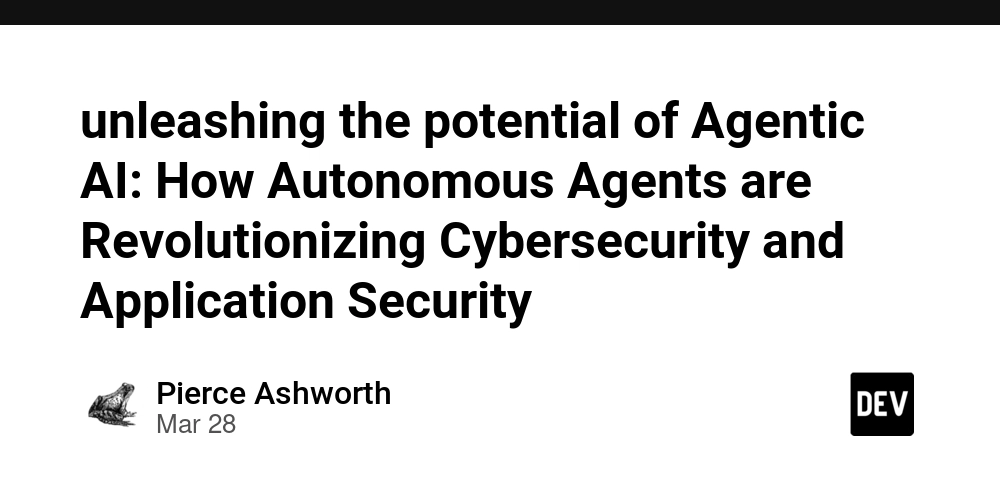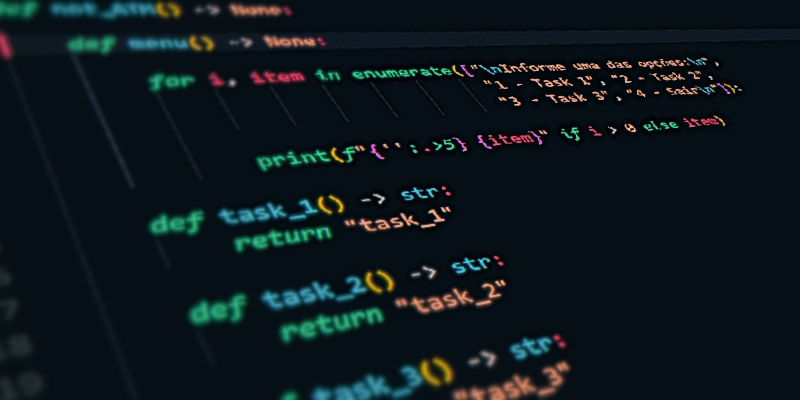unleashing the potential of Agentic AI: How Autonomous Agents are Revolutionizing Cybersecurity and Application Security
Introduction In the rapidly changing world of cybersecurity, where threats are becoming more sophisticated every day, enterprises are relying on Artificial Intelligence (AI) to bolster their defenses. AI has for years been used in cybersecurity is currently being redefined to be agentsic AI and offers flexible, responsive and context aware security. This article focuses on the transformational potential of AI with a focus on its applications in application security (AppSec) and the ground-breaking concept of AI-powered automatic vulnerability-fixing. The Rise of Agentic AI in Cybersecurity Agentic AI is a term that refers to autonomous, goal-oriented robots that are able to see their surroundings, make decisions and perform actions in order to reach specific targets. Unlike traditional rule-based or reactive AI systems, agentic AI machines are able to evolve, learn, and function with a certain degree of autonomy. In the context of security, autonomy can translate into AI agents who constantly monitor networks, spot suspicious behavior, and address threats in real-time, without any human involvement. The power of AI agentic for cybersecurity is huge. The intelligent agents can be trained to recognize patterns and correlatives using machine learning algorithms and large amounts of data. They can sift through the chaos of many security incidents, focusing on those that are most important and provide actionable information for rapid intervention. Furthermore, agentsic AI systems can learn from each incident, improving their capabilities to detect threats and adapting to constantly changing techniques employed by cybercriminals. Agentic AI (Agentic AI) as well as Application Security Agentic AI is a powerful tool that can be used for a variety of aspects related to cyber security. But the effect the tool has on security at an application level is notable. The security of apps is paramount in organizations that are dependent ever more heavily on interconnected, complex software systems. AppSec tools like routine vulnerability scans and manual code review do not always keep up with modern application design cycles. In the realm of agentic AI, you can enter. Through the integration of intelligent agents in the lifecycle of software development (SDLC) businesses could transform their AppSec procedures from reactive proactive. AI-powered software agents can constantly monitor the code repository and analyze each commit for vulnerabilities in security that could be exploited. They can leverage advanced techniques including static code analysis dynamic testing, and machine-learning to detect numerous issues, from common coding mistakes to little-known injection flaws. The thing that sets the agentic AI different from the AppSec field is its capability to understand and adapt to the particular environment of every application. Agentic AI is capable of developing an extensive understanding of application design, data flow and attacks by constructing the complete CPG (code property graph) which is a detailed representation of the connections between code elements. The AI is able to rank security vulnerabilities based on the impact they have in the real world, and what they might be able to do rather than relying on a standard severity score. AI-Powered Automated Fixing: The Power of AI The idea of automating the fix for weaknesses is possibly the most intriguing application for AI agent technology in AppSec. Human developers were traditionally responsible for manually reviewing the code to identify the vulnerability, understand the issue, and implement the solution. The process is time-consuming in addition to error-prone and frequently leads to delays in deploying important security patches. Agentic AI is a game changer. game has changed. AI agents are able to detect and repair vulnerabilities on their own by leveraging CPG's deep expertise in the field of codebase. AI agents that are intelligent can look over the code surrounding the vulnerability, understand the intended functionality, and craft a fix which addresses the security issue without creating new bugs or affecting existing functions. AI-powered, automated fixation has huge impact. It can significantly reduce the amount of time that is spent between finding vulnerabilities and remediation, making it harder for cybercriminals. It will ease the burden on development teams so that they can concentrate on developing new features, rather of wasting hours fixing security issues. Automating the process of fixing vulnerabilities allows organizations to ensure that they are using a reliable and consistent approach and reduces the possibility for human error and oversight. What are the challenges as well as the importance of considerations? It is vital to acknowledge the risks and challenges associated with the use of AI agents in AppSec as well as cybersecurity. Accountability as well as trust is an important one. When AI agents are more aut

Introduction
In the rapidly changing world of cybersecurity, where threats are becoming more sophisticated every day, enterprises are relying on Artificial Intelligence (AI) to bolster their defenses. AI has for years been used in cybersecurity is currently being redefined to be agentsic AI and offers flexible, responsive and context aware security. This article focuses on the transformational potential of AI with a focus on its applications in application security (AppSec) and the ground-breaking concept of AI-powered automatic vulnerability-fixing.
The Rise of Agentic AI in Cybersecurity
Agentic AI is a term that refers to autonomous, goal-oriented robots that are able to see their surroundings, make decisions and perform actions in order to reach specific targets. Unlike traditional rule-based or reactive AI systems, agentic AI machines are able to evolve, learn, and function with a certain degree of autonomy. In the context of security, autonomy can translate into AI agents who constantly monitor networks, spot suspicious behavior, and address threats in real-time, without any human involvement.
The power of AI agentic for cybersecurity is huge. The intelligent agents can be trained to recognize patterns and correlatives using machine learning algorithms and large amounts of data. They can sift through the chaos of many security incidents, focusing on those that are most important and provide actionable information for rapid intervention. Furthermore, agentsic AI systems can learn from each incident, improving their capabilities to detect threats and adapting to constantly changing techniques employed by cybercriminals.
Agentic AI (Agentic AI) as well as Application Security
Agentic AI is a powerful tool that can be used for a variety of aspects related to cyber security. But the effect the tool has on security at an application level is notable. The security of apps is paramount in organizations that are dependent ever more heavily on interconnected, complex software systems. AppSec tools like routine vulnerability scans and manual code review do not always keep up with modern application design cycles.
In the realm of agentic AI, you can enter. Through the integration of intelligent agents in the lifecycle of software development (SDLC) businesses could transform their AppSec procedures from reactive proactive. AI-powered software agents can constantly monitor the code repository and analyze each commit for vulnerabilities in security that could be exploited. They can leverage advanced techniques including static code analysis dynamic testing, and machine-learning to detect numerous issues, from common coding mistakes to little-known injection flaws.
The thing that sets the agentic AI different from the AppSec field is its capability to understand and adapt to the particular environment of every application. Agentic AI is capable of developing an extensive understanding of application design, data flow and attacks by constructing the complete CPG (code property graph) which is a detailed representation of the connections between code elements. The AI is able to rank security vulnerabilities based on the impact they have in the real world, and what they might be able to do rather than relying on a standard severity score.
AI-Powered Automated Fixing: The Power of AI
The idea of automating the fix for weaknesses is possibly the most intriguing application for AI agent technology in AppSec. Human developers were traditionally responsible for manually reviewing the code to identify the vulnerability, understand the issue, and implement the solution. The process is time-consuming in addition to error-prone and frequently leads to delays in deploying important security patches.
Agentic AI is a game changer. game has changed. AI agents are able to detect and repair vulnerabilities on their own by leveraging CPG's deep expertise in the field of codebase. AI agents that are intelligent can look over the code surrounding the vulnerability, understand the intended functionality, and craft a fix which addresses the security issue without creating new bugs or affecting existing functions.
AI-powered, automated fixation has huge impact. It can significantly reduce the amount of time that is spent between finding vulnerabilities and remediation, making it harder for cybercriminals. It will ease the burden on development teams so that they can concentrate on developing new features, rather of wasting hours fixing security issues. Automating the process of fixing vulnerabilities allows organizations to ensure that they are using a reliable and consistent approach and reduces the possibility for human error and oversight.
What are the challenges as well as the importance of considerations?
It is vital to acknowledge the risks and challenges associated with the use of AI agents in AppSec as well as cybersecurity. Accountability as well as trust is an important one. When AI agents are more autonomous and capable of acting and making decisions independently, companies have to set clear guidelines and oversight mechanisms to ensure that AI is operating within the bounds of acceptable behavior. AI operates within the bounds of behavior that is acceptable. It is vital to have solid testing and validation procedures in order to ensure the quality and security of AI created corrections.
Another issue is the risk of attackers against AI systems themselves. Since agent-based AI technology becomes more common in the world of cybersecurity, adversaries could seek to exploit weaknesses in AI models, or alter the data upon which they're trained. This highlights the need for secure AI methods of development, which include methods like adversarial learning and model hardening.
Additionally, the effectiveness of the agentic AI within AppSec is dependent upon the quality and completeness of the code property graph. In order to build and maintain an accurate CPG the organization will have to spend money on techniques like static analysis, testing frameworks as well as integration pipelines. Organizations must also ensure that they ensure that their CPGs remain up-to-date to take into account changes in the codebase and ever-changing threat landscapes.
Cybersecurity: The future of artificial intelligence
The potential of artificial intelligence in cybersecurity appears hopeful, despite all the challenges. It is possible to expect advanced and more sophisticated autonomous AI to identify cyber threats, react to them, and diminish their impact with unmatched speed and precision as AI technology continues to progress. Agentic AI built into AppSec is able to revolutionize the way that software is created and secured and gives organizations the chance to design more robust and secure apps.
The incorporation of AI agents within the cybersecurity system offers exciting opportunities for coordination and collaboration between security tools and processes. Imagine a scenario w here autonomous agents collaborate seamlessly through network monitoring, event response, threat intelligence, and vulnerability management. Sharing insights and coordinating actions to provide an all-encompassing, proactive defense against cyber attacks.
It is essential that companies adopt agentic AI in the course of progress, while being aware of its social and ethical implications. It is possible to harness the power of AI agents to build security, resilience, and reliable digital future by creating a responsible and ethical culture to support AI development.
The article's conclusion can be summarized as:
In today's rapidly changing world of cybersecurity, the advent of agentic AI can be described as a paradigm shift in the method we use to approach security issues, including the detection, prevention and mitigation of cyber security threats. The power of autonomous agent, especially in the area of automated vulnerability fixing as well as application security, will help organizations transform their security strategies, changing from a reactive strategy to a proactive security approach by automating processes that are generic and becoming context-aware.
Agentic AI is not without its challenges yet the rewards are more than we can ignore. As we continue pushing the limits of AI in the field of cybersecurity and other areas, we must adopt an eye towards continuous learning, adaptation, and responsible innovation. It is then possible to unleash the full potential of AI agentic intelligence to secure businesses and assets.
here



















_NicoElNino_Alamy.png?#)























































